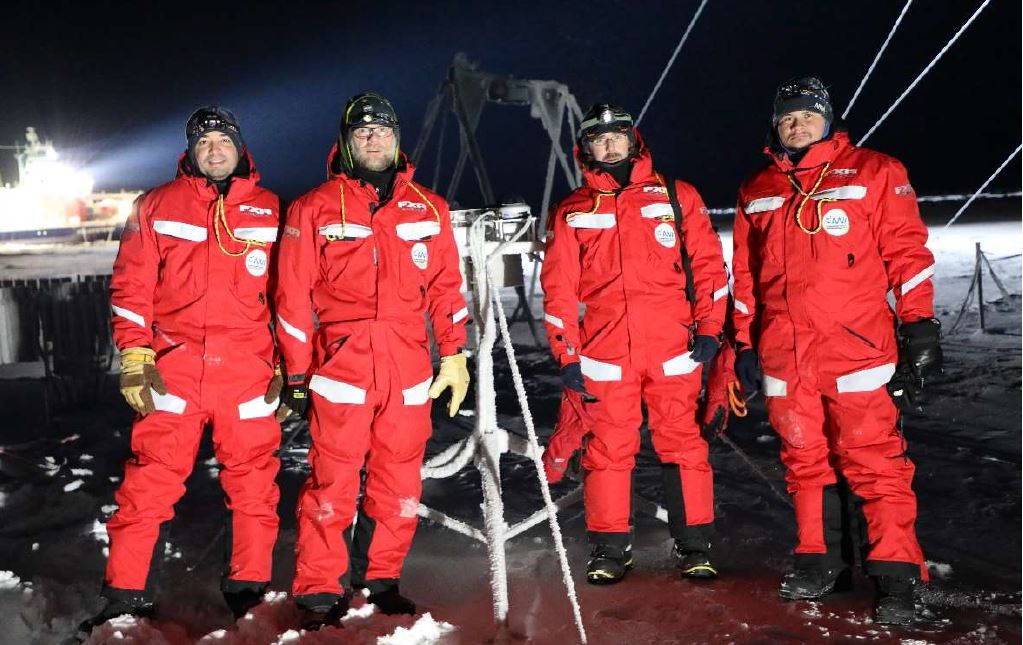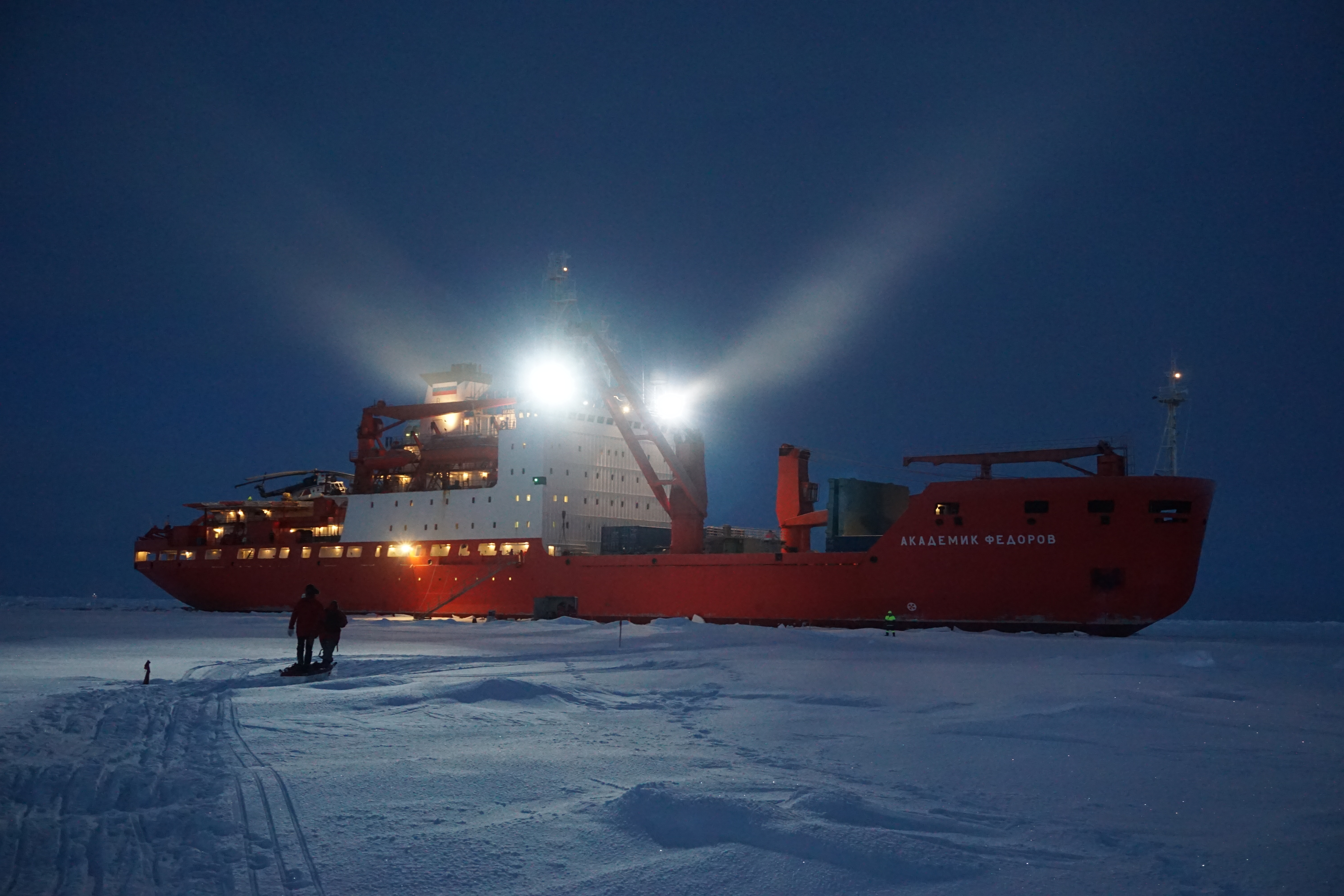MOSAiC PI Blog, Part 2: Teamwork Makes the MOSAiC Dream Work
Published: 18 February 2020
Editor’s note: Matthew Shupe, co-coordinator for the Multidisciplinary Drifting Observatory for the Study of Arctic Climate (MOSAiC) expedition, sent back an update after the first leg. In this post, Shupe, a principal investigator funded by the U.S. Department of Energy’s Atmospheric System Research (ASR) program, discusses the ARM team’s role in MOSAiC.

This is a topic that I am very happy to write about. The ARM team is simply stellar. The field techs from Leg 1 had this great balance: Vagner Castro with broad expertise, Juarez Viegas able to deal with the complicated Aerosol Observing System instruments, and Steele Griffiths having a lot of experience in extreme places and able to handle a lot of the practical details.
I was also thoroughly impressed with the install phase. I had to spend a lot of political capital to get eight extra berths for ARM people on the install leg. Initially I was a bit nervous because, since the final instrument install and startup would not occur until the ship stopped, there was a lot of down time (i.e., sit around and drink coffee) during the initial transit to the ice, yet I had to continue justifying their presence on board. But then we parked, and the real work began.
There was so much to accomplish, getting all of the instruments up and running, but also doing all kinds of “group” work to establish an ice camp with infrastructure, to get things powered. The full ARM team played a tremendous role at this time. When there was extra capacity beyond setting up ARM instruments, they would be at the front of the line contributing their expertise and muscle in a very impressive way. And the team (I’m sure intentionally) comprised such a comprehensive set of talents—working with power cables, building, welding, and all kinds of other practical skills that came in handy on many occasions. The people who ARM brings to the field are such an important reflection of the ARM facility, and this team has done a fantastic job.
While talking about people, I also want to acknowledge the attendees of the farewell events in Tromsø, Norway. Apart from AWI (the Alfred Wegener Institute), no other institution was better represented than DOE. It demonstrates institutional support from the bottom to the top and a commitment to excellence. I found this to be truly impressive.

I know MOSAiC has been a tremendous challenge in all respects. It is a huge draw on resources and a big ask for people to spend months on end in difficult conditions. It has pushed people’s comfort levels with data handling and international cooperation. But I really do think this is such an important project, and, as usual, DOE steps forward with strength and skill. It really does make me proud to be a part of this whole operation and part of the DOE-ARM-ASR family. I am very much looking forward to the ARM-ASR and international communities getting their hands on these unique and interesting data.
Coming up next: Shupe shares snapshots from the Arctic.
Read Part 1 of Shupe’s blog series, in which he writes about the conditions in the Arctic and instrument installation.
# # #
MOSAiC is an international arctic research expedition led by the Alfred Wegener Institute with U.S. contributions from the U.S. Department of Energy, National Science Foundation, National Oceanic and Atmospheric Administration, and NASA.
Keep up with the Atmospheric Observer
Updates on ARM news, events, and opportunities delivered to your inbox
ARM User Profile
ARM welcomes users from all institutions and nations. A free ARM user account is needed to access ARM data.


















